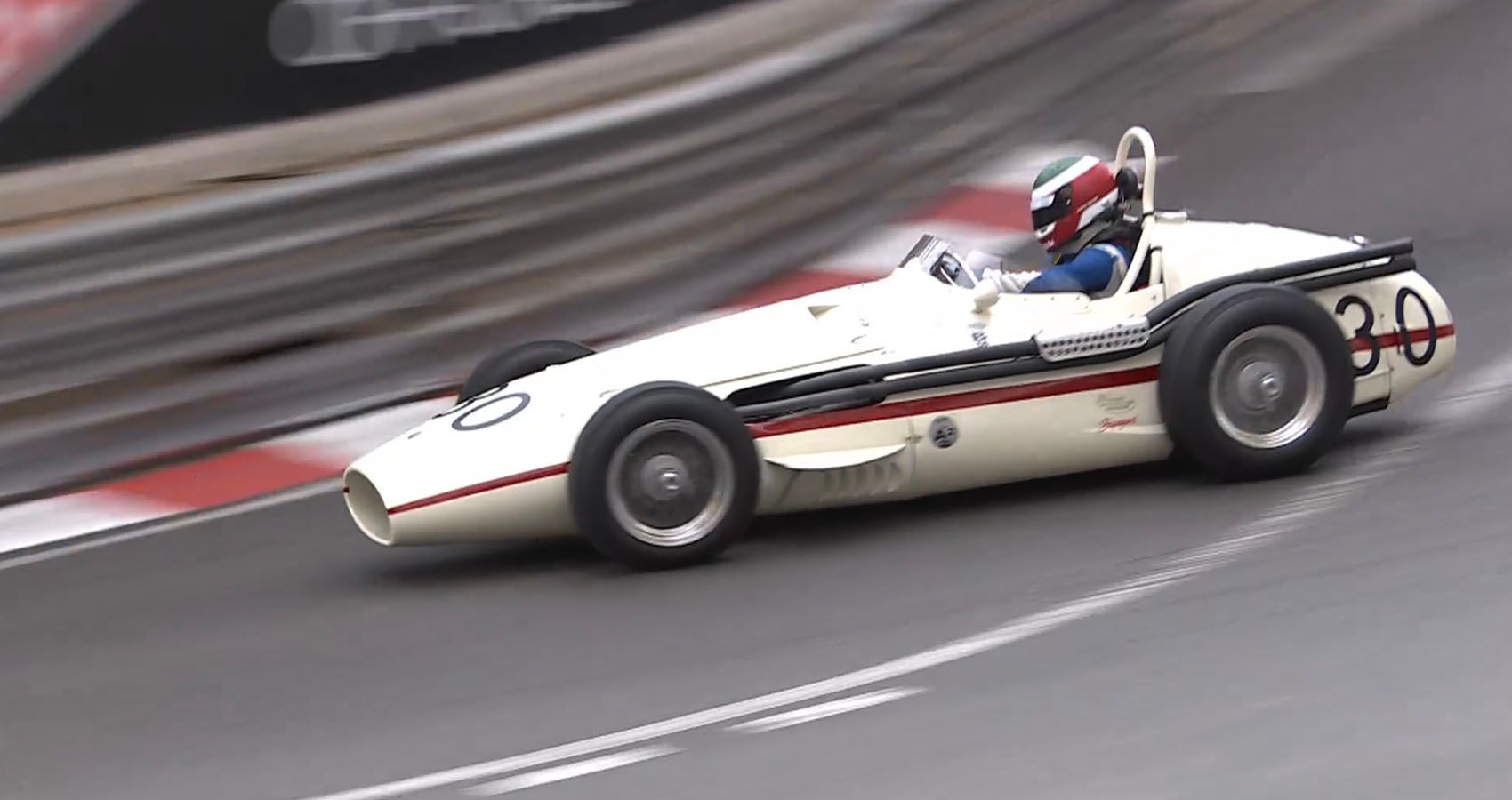Drifting and Formula 1 are not phenomena that mix very often, with the combination of enormous weight and modern Pirelli tyres usually seeing any form of oversteer result in an overcorrection, spin and a crash. But it wasn't always like this in F1.
Classic Formula 1 machinery are beautiful objects to behold, none more so than the caricature that is the Maserati 250F, and so are generally found in museums or former racing drivers' living rooms. Every once in a while though a selection of pain-stakingly restored classic racing cars coalesce at historic festivals - some even wheeled out to race against each other.
The similarly historic Monaco lays on a special annual showcase of the priceless and exotic classic F1 cars of years gone past. The famous Monaco Grand Prix Historique features a variety of spectacular historic races between similar era'd cars, and one-off demonstration runs for those truly one-off cars and drivers.
The 250F is one of the most famous racing cars of all time, winning six F1 races at the hands of the great Juan Manuel Fangio who frequently felt the need to pitch his cars into long high speed drifts to get one up on his rivals.
Why Is There A Historic Version Of The Monaco Grand Prix?
The event, which follows the newest addition to the Monaco racing calendar, Formula E's Monaco E-Prix, precedes the 2022 Monaco Grand Prix by two weeks. There's a small period in which these three main events take place on the tight and twisty streets of the principality, owing to the disruptive nature of the circuit construction. An array of armco and tecpro barriers, temporary grandstands and bridges and routine resurfacing of a third of the layout every year leaves Monaco residents and visitors with a lot of obstacles to overcome. This is something that the country has naturally grown accustom to over the years but is still a hindrance nevertheless.
As the barriers are put up, the track is host to all kinds of events during the time. All of the events are organized by the Automobile Club de Monaco. On its official Facebook page, the institution posted some visual anecdotes from the events. One of them that stood out was this small clip from the reportedly a qualifying session of a classic race that witnessed the Maserati 250F going sideways through the tight street corners of Monaco.
The historic racing cars have become a relatively new staple of the Monaco racing season owing to the increase in interest in historic racing, kicked off by the likes of the Goodwood Revival and Silverstone Classic in the United Kingdom.
Thrown into the spotlight for perhaps all the wrong reasons, this year's event took off when current Ferrari Formula 1 driver Charles Leclerc crashed an ex-Niki Lauda 1974 Ferrari 312B3, while conducting a demonstration run alongside former Ferrari F1 driver Jacky Ickx.
On only the Monegasque's third lap he suffered from a brake failure and spun the car backwards into the barrier on the exit of the penultimate La Rascasse corner, destroying the car's rear wing and causing the engine to start smoking when Leclerc attempted to get going again.
An Unconventional Car on An Unconventional Race Track
That vintage 250F 2.5-liter inline-six soundtrack absolutely sings between the tall Monaco buildings, bouncing around the historic venue just as it would have done in its heyday. Sadly, its modern day lap times can not be equally compared to that done by Fangio and the likes in the 1950s - the circuit, although on the same roads as back then, has seen significant changes such as the addition of the Swimming Pool chicanes and slow Nouvelle chicane after the tunnel.
The driver effortlessly displays the 250F's sideways party piece, throwing the car into ever-more-extremely-angled oversteer throughout this qualifying lap. At the Loews hairpin, the slowest corner on the current F1 calendar, the 250F takes a huge amount more kerb on the inside - whilst sideways of course - than any contemporary F1 driver could even dream of without damaging the complex underfloor.
Long slides and kerb hopping was easily achieved in the 1950s thanks to the ultra-thin and virtually grip-less tyres which transferred the 250bhp to the tarmac. And at the Monaco Historique the cars are firmly raced in original spec in as many aspects as possible.
Fangio's ability to conquer daunting race-tracks with a dose of frightening high speed oversteer automatically makes him and his cars one of the greatest racing driver and car amalgamation of all time, and witnessing something as eye-catching as this certainly caught our attention.
Source: Automobile Club de Monaco

